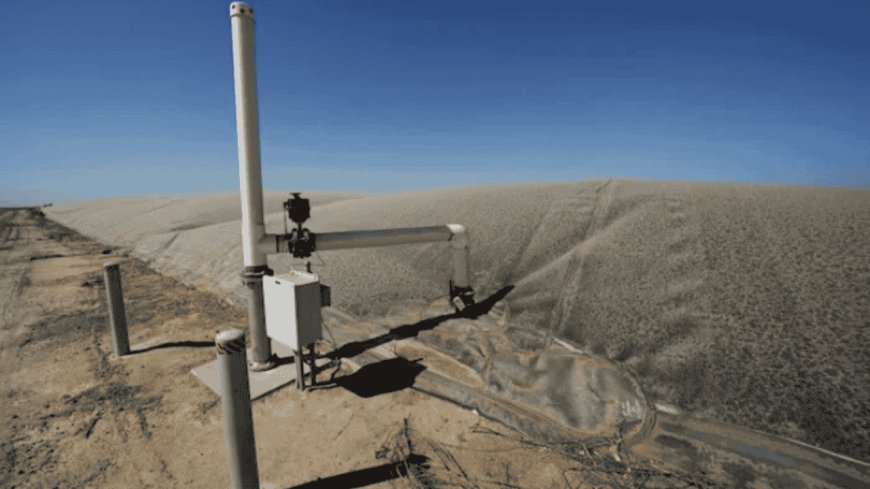Other greenhouse gases are contributing to the warming of the planet
Other greenhouse gases are contributing to the warming of the planet

PARIS: Along with being the third major greenhouse gas, which is almost 300 times as potent as CO2
The best-known greenhouse gas, carbon dioxide, or CO2, is joined in driving global warming by various other gases such as methane and nitrous oxide, which is also one of the greenhouse substances contributing towards the change in climate of Earth.
According to the World Meteorological Organisation, all three increased greenhouse gas concentrations over the average number of years during 2023. This has locked the historical temperatures of their routines and increased the average temperature expectancy for many years to come.
Piers Forster of the University of Leeds and a contributing writer of the IPCC documents states, “CO2 adds to almost two-thirds of the greenhouse gas warming effects. Every other gasses!”
Methane, also known as CH4, accounts to be the second most implicated Green House gas fuel in most human practices after CO2 emissions.
About 40% of the methane emission is caused by natural wetlands, whereas 60% is largely due to human practices such as livestock, agriculture systems, including rice, fossil fuel exploration, and waste.
However, CO2 is warmer than CO2 by more than 80 fold over the span of 20 years; it is way more short-lived, which supports its use when preserving the green house issue claim.
According to Mathijs Harmsen, who is a researcher at the PBL Netherlands Environmental Assessment Agency, shifting the focus towards cutting down methane emissions “would have a significant short-term cooling effect, as atmospheric methane concentrations would decrease rapidly.
Policies should be “directed at capturing the low-hanging fruit, so the very low-cost measures such as reducing natural gas leaks,” he said.
Despite commitment by the majority of countries in the world, including members of the European Union and the United States, to cut down planet-heating emissions, the trend is not positive.
According to a study published in the Environmental Research Letters, an international group of researchers under the Global Carbon Project said, “The primary greenhouse gas emitted by human activities is methane, and it is growing at a faster rate compared to any other major greenhouse gas, and it is currently 2.6 times more abundant than in pre-industrial times.”
Nitrogen oxide
Nitrous oxide (N2O) is the second category of greenhouse gases and it is nearly 300 times stronger than CO2 and is known as nitrous protoxide vapour.
Agriculture is the main contributor of its emissions through synthetic nitrogen fertilisers and the manure it generates.
More emissions come from natural (soil and oceans) or human activities (chemical industry, wastewater, fossil fuels).
“According to a significant article published in Nature in 2020, the global anthropogenic emissions, predominantly nitrogen additions to croplands, grew by 30% during the past four decades.”
There is more room for improvement in how we make use of fertilizers.
“Around 20% of the world’s cropland, especially in humid subtropical agricultural zones, may be targeted, and two-thirds of the potential for climate change mitigation of N2O may be achieved,” says French scientist Philippe Ciais, in 2021.
Fluorinated gases, perchloroethylene, hydro-fluorocarbons, and sulfur hexafluoride are potent contributors to global warming.
Air conditioners, refrigerators, heat pumps, freezers, and electrical networks all contain hydro-fluorinated greenhouse gases, including PFCs, HFCs, and SF6.
Despite their low concentrations, they have very strong warming effects.
As an example, consider SF6, which can be found in electrical transformers. This gas has a greenhouse effect that is 24 thousand times stronger than CO2 over 100 years.
Fifty years after the Montreal Protocol was signed and ratified by 195 countries, there was a change in Montreal, which started improving the climatic situation, where the presence of CFCs, another fluorinated gas, was already high in the atmosphere.
The Kigali agreement also called for the prohibition of HFCs in 2016.
And last year, the EU was able to move forward thanks to an agreement to prohibit the selling of devices that contain gases with production potentials, including HFCs. And the expected year is the year 2050.
What's Your Reaction?
































